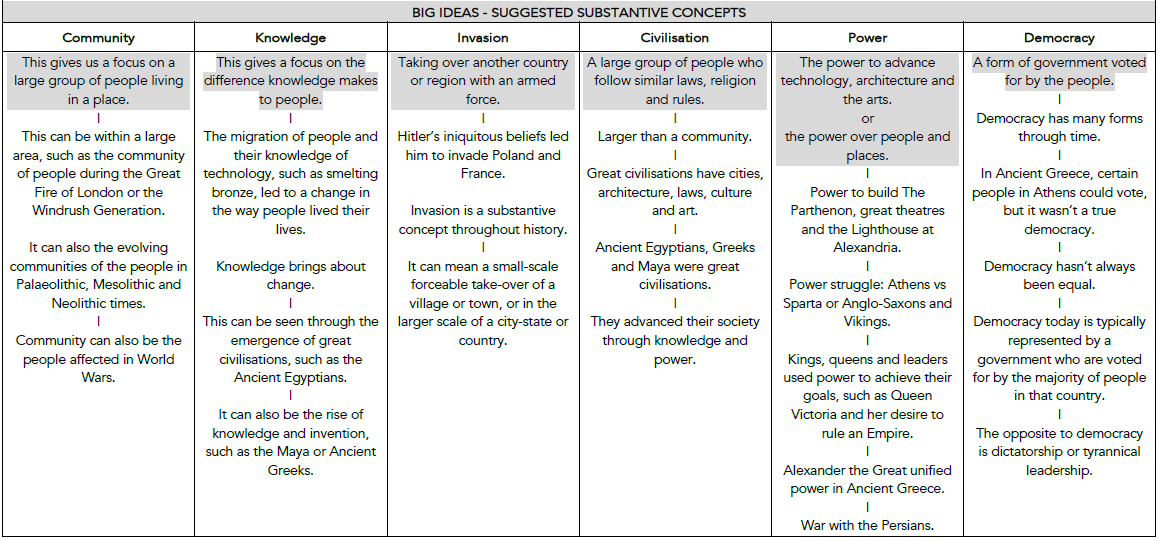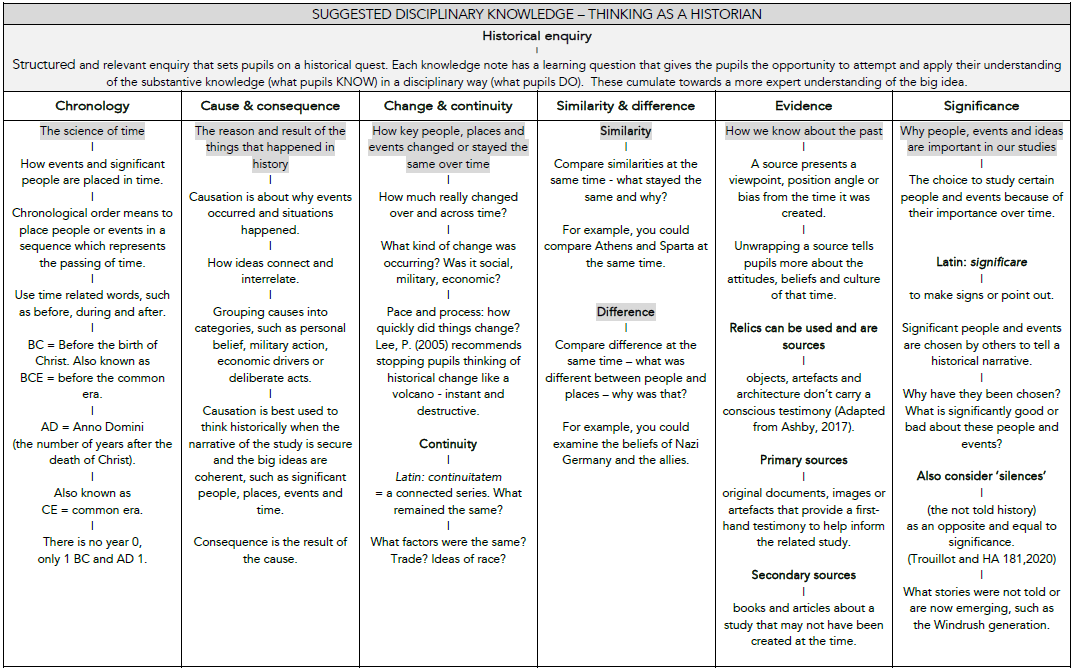History
The study of the past - learning about people, places, events and changes.
a) Substantive knowledge - this is the subject knowledge and explicit vocabulary used about the past. Common misconceptions are explicitly revealed as non-examples and positioned against known and accurate content. Misconceptions are challenged carefully and in the context of the substantive and disciplinary knowledge.
In CUSP History, it is recommended that misconceptions are not introduced too early, as pupils need to construct a mental model in which to position new knowledge.
CUSP have defined substantive concepts that are the suggested vehicle to connect the substantive knowledge. These are defined at the start of every study in the Big Idea.

b) Disciplinary knowledge – this is the use of that knowledge and how children construct understanding through historical claims, arguments and accounts. CUSP call it ‘Working Historically.’ The features of thinking historically may involve significance, evidence, continuity and change, cause and consequence, historical perspective and contextual interpretation.

c) Historical analysis is developed through selecting, organising and integrating knowledge through reasoning and inference making in response to our structured questions and challenges. We call this ‘Thinking historically’.
d) Substantive concepts, such as invasion and civilisation are taught through explicit vocabulary instruction as well as through the direct content and context of the study.
EYFS to Year 6 - Long Term Plan
PRINCIPLES
CUSP History draws upon prior learning, wherever the content is taught. For example, in the EYFS, pupils may learn about the past and present through daily activities, exploring through change, and understanding more about the lives of others through books and visitors as well as their own experiences. These experiences are drawn upon and used to position new learning in KS1.
The structure is built around the principles of advancing cumulative knowledge, chronology, change through cause and consequence, as well as making connections within and throughout periods of time studied. CUSP History is planned so that the retention of knowledge is much more than just ‘in the moment knowledge’.
The cumulative nature of the curriculum is made memorable by the implementation of Bjork’s desirable difficulties, including retrieval and spaced retrieval practice, word building and deliberate practice tasks. This powerful interrelationship between structure and research-led practice is designed to increase substantive knowledge and accelerate learning within and between study modules. That means the foundational knowledge of the curriculum is positioned to ease the load on the working memory: new content is connected to prior learning.
The effect of this cumulative model supports opportunities for children to associate and connect with significant periods of time, people, places and events. CUSP History strategically incorporates a range of modules that revisit, elaborate and sophisticate key concepts, events, people and places.
A guiding principle of CUSP History is that pupils become ‘more expert’ with each study and grow an ever-broadening and coherent mental timeline. This guards against superficial, disconnected and fragmented understanding of the past. Specific and associated historical vocabulary is planned sequentially and cumulatively from Year 1 to Year 6. High-frequency, multiple meaning words (Tier 2) are taught alongside and help make sense of subject specific words (Tier 3). Each learning module in history has a vocabulary module with teacher guidance, tasks and resources.
History Long Term Plan
CUSP fulfils and goes well beyond the expectations of the National Curriculum. CUSP was the right curriculum for Offham Primary School as we believe there is no ceiling to what pupils can learn if the architecture and practice is founded in evidence-led principles.

